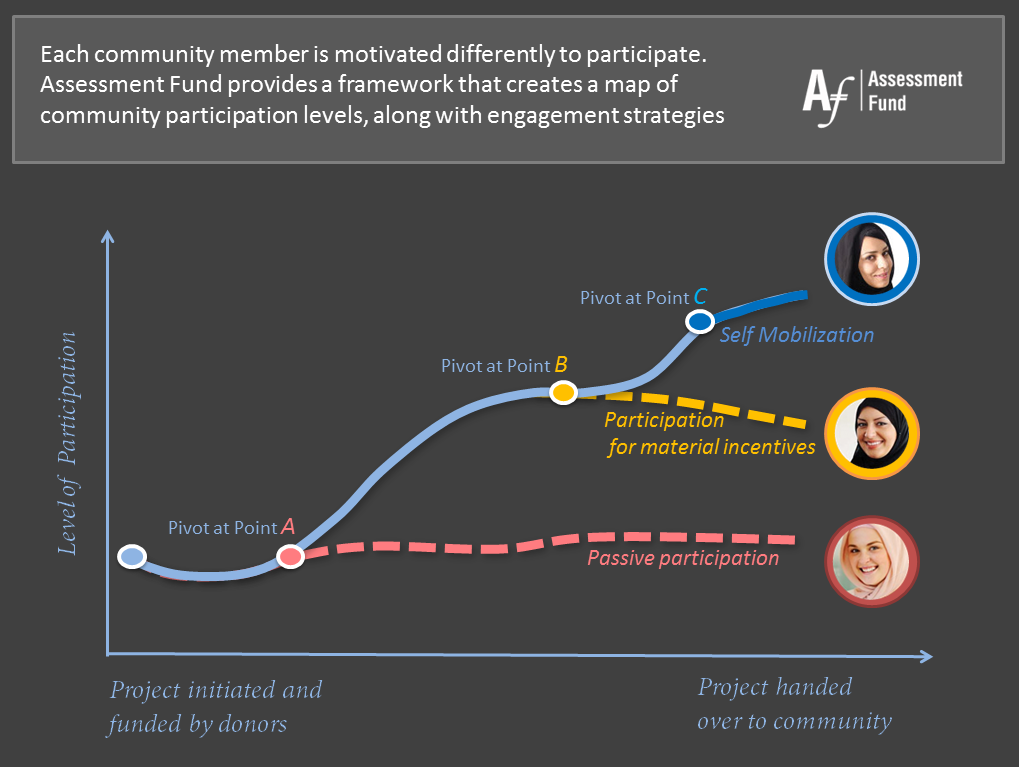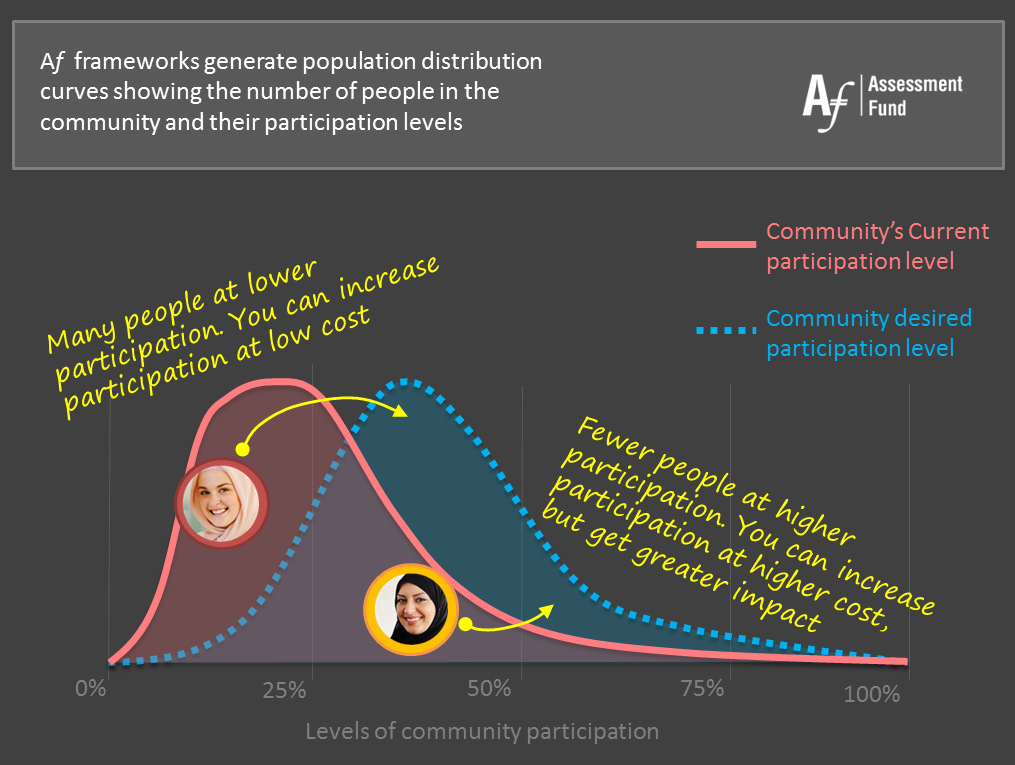Managing community participation
The Assessment Fund (Af) was recently asked to share its analysis on a community mobilization program (CMP) designed to launch 400 schools in host communities. Af has created a strategy paper on sustainability through leveraging technology frameworks and enhancing community participation. This strategy paper is available upon request.
CMPs are frequently used by the development sector when they want to take the lead in setting up and running a project, but they also want a planned exit and structured handover to the local leadership. Although CMPs are noble initiatives, and it makes sense to have the community sustain the project, unfortunately there is a graveyard of unsuccessful CMPs that should be studied. Lessons can be learnt from lack-luster projects such as the Planned Approach to Community Health (PATCH) in Maine to understand the dynamics of how a host community reacts and participates.
When studying and evaluating a CMP, Af begins by focusing on end goal: the projects ability to sustain itself after the handover. We begin by studying 3 key questions:
- How well is the project institutionalized within the community and how well is it understood by the community stakeholders
- What type of a participation frameworks are in place to ensure the on-boarding of community stakeholders
- What operational indicators have been put in place to ensure monitoring and evaluation (M&E), but more importantly how effective is the response from the community when these indicators hit critical levels.
The benefits of building a ‘participation profile’ framework
For a project to be institutionalized effectively within a community, it would benefit from a ‘participation profiling’ framework (technology). It would be helpful to break down ‘participation’ into levels (from least interest, to most interested). This will give the program managers the ability to visualize a spectrum of existing participation levels within the community, through which they can forecast how healthy the project would be once it has been handed over.
The following illustration shows participation levels of 3 profiles (of many within a community’s participation spectrum). These types of reports can be generated using Af ‘s technology frameworks, and they help in understanding who to empower, and how to empower them.

Once a participation framework is in place, and is flushed with data, then Af‘s tools can help program managers in moving towards evidence-based strategy creation.
A recommended technique is to generate a participation distribution curve that shows the different portions of the community, and their willingness to participate. Program managers will be able to see existing levels of participation and compare it to a baseline (or desired level). This can then be used to create a strategy on how to increase overall participation.
Tracking participation rates to understand how to promote nutrition and healthcare
Once a participation profile map has been created, it can be used as an effective tool to address nutrition and healthcare related objectives. The Af technology framework produces a technology that can track key influencers, their competencies, and their participation commitment and in creating Community Action Groups. This now gives program managers an online database to human capital that can be mobilized for nutrition and healthcare related projects. This becomes particularly useful in emergecy capacity building during times of crisis such as floods, droughts, disease outbreaks, where decision makers will have quick access to resource mobilization.
Launching 400 schools = managing 400 ecosystems = 1 master technology framework by Af
Launching and managing 400 school, then most importantly encouraging and promoting high level of participation rate will have its own challenges. If other CMP projects (within the region) are studied, it will not be surprising to see that post-handover, the projects have not fared as well as expected. By understanding shortfalls of previous projects (which do not hold ‘sustainability’ at their core), this project will have reduced its risks. One shortfall that we have identified is the lack of technology frameworks, which help in standardizing management of processes, and help bring all operations under one umbrella.
Af can develop customized frameworks, powered by technology (including mobile apps for primary data collection on-site), which can be monitored, and can provide timely alerts ahead of any dip in participation levels. Since each school will have its own personality, and its own challenges, a master framework will be able to provide real-time baseline analysis to all stakeholders.
Since all data is collected is primary data, the Af frameworks index and catalog its effectively so that it can be extrapolated in various permutations. This way it can instantly generate useful tools such as Capacity Index on a local or a provincial scale.
Technology frameworks promote sustainability and make it easy to hand over a project to the community
The key challenge for a CMP is in the hand-over to the community or local bodies. During a hand-over if the program managers are submitting files and paper, then it should become evident that the new owners will not be able to run the operations as effectively. The new owners will not be able to retain the standards that was maintained by their predecessors, and the project has become inefficient from the 1st day. However if the hand-over is more along the lines of a username and password of an Admin Control Panel, through which the user can access all data, and perform numerous processes and functions then the transfer of information and work process will happen more effectively.
Having said this, very few donors, such as the Melinda & Bill Gates Foundation, and the Clinton Global Initiative are leveraging technology frameworks as a solution for better management. These donors have an appreciation of how to reduce risk and cost using technology frameworks to introduce standardization, which in turn increases sustainability.
Final words…
Getting people to participate is easy if you know what they are good at, and where they want to contribute. This can only be done using technology frameworks. During the hand-over if the new owners are mirroring what the predecessors were doing (though a technology framework) then sustainability will remain high.

